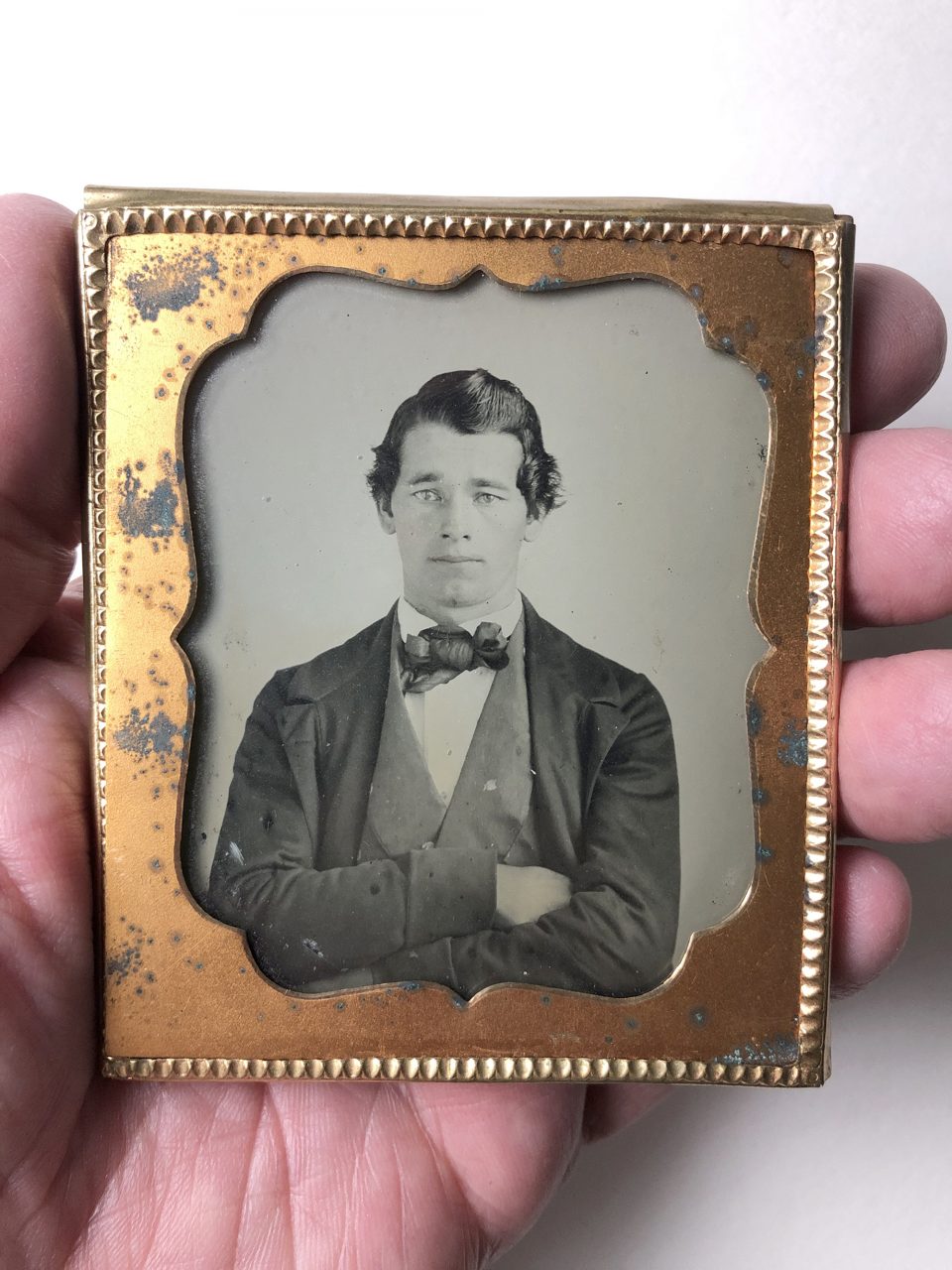In this video, fine art photographer Keith Dotson presents an antique 1850s ambrotype portrait in detail, including what it looks like separated from its dark backing
Ambrotypes were just the second commercially viable type of photographic process ever invented, following Daguerreotypes.
Ambrotypes were made on plates of glass using the wet collodion photography process, starting in the 1850s. Ambrotypes and the related process of tintypes (made on thin plates of iron) were faster and cheaper to make than Daguerreotypes. Each ambrotype photograph was a unique original image made in the camera.
Ambrotypes and tintypes were offered in certain standard sizes with the sixth plate being the most common size (Library of Congress). Our featured ambrotype is a sixth plate.

List of common ambrotype and tintype sizes
- Imperial or Mammoth Plate – Larger than 6.5 x 8.5 inches
- Whole Plate – 6.5 x 8.5 inches
- Half Plate – 4.25 x 5.5 inches
- Quarter Plate – 3.25 x 4.25 inches
- Sixth Plate – 2.75 x 3.25 inches
- Ninth Plate – 2 x 2.5 inches
- Sixteenth Plate – 1.5 x 1.75 inches
By the middle of the 1860s, ambrotypes were supplanted in popularity by prints on paper made from negatives, which allowed affordable, easy multiple reproductions.
Sources and Links
Library of Congress. “Ambrotypes and Tintypes.”
Thanks for reading.
Be sure to visit me on Instagram, YouTube, or Pinterest, or on my website at keithdotson.com.
~ Keith
